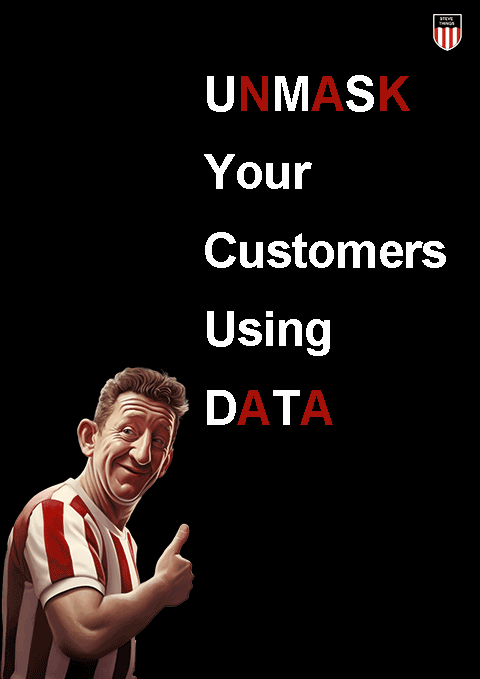Are you looking for a way to streamline your marketing efforts and turn raw data into actionable insights? A Customer Data Platform (CDP) can help you do just that. CDPs are powerful tools that allow businesses to collect and store customer data in one place, giving marketers access to the information they need to effectively target potential customers.
Customer data is key
As technology advances, it's becoming increasingly important for businesses to stay competitive in the market. To do this, marketers must be able to quickly access customer data in order to create targeted campaigns that will reach their desired audiences. With a CDP, businesses can easily collect and organize customer data from multiple sources and use it to power their marketing initiatives. It's an essential tool for any business looking to increase efficiency and drive sales.
Definition Of A CDP
A Customer Data Platform (CDP) is a powerful tool for marketers. It is a centralised system that collects and stores customer data from multiple sources (either with a tag manager or API) in order to create a single view of the customer.
This can be used to provide insights into customer behavior, preferences, and trends that can be used to tailor campaigns and more effectively target customers.
A CDP can help streamline marketing efforts by providing an easy way to access valuable customer data. By collecting the data in one place, marketers are able to quickly identify which customers are most engaged with their product or service and develop strategies to better reach them. Additionally, they can analyze the data to gain insights into customer behavior over time and adjust their strategy accordingly.
The ability to seamlessly integrate customer data from various sources makes a CDP an invaluable tool for marketers looking to take their marketing efforts up a notch. With this type of platform in place, marketers are able to easily collect and analyze large amounts of customer data that would otherwise require costly manual labor or expensive software solutions. This allows them to focus on creating effective campaigns based on actionable insights instead of wasting time searching for information scattered across different platforms.
Benefits Of Using A CDP over Analytics alone
The benefits of using a CDP are clear. By having all customer data stored in one place, marketers can save time and money when creating campaigns. They can easily access customer data to identify trends, segment customers for targeted campaigns, or personalise their messaging. Additionally, the insights provided by the CDP can help marketers better understand their audience and develop strategies that will lead to more successful campaigns.
CDPs also have the potential to provide valuable insights into customer behaviour over time, allowing marketers to adjust their strategies accordingly. With such detailed information at their fingertips, marketers can track key performance indicators (KPIs) such as customer engagement or purchase frequency and make informed decisions about how to tweak their strategy for maximum efficiency.
With analytics tools today what you get is anonymous user behaviour which has it's uses for measuring website effectiveness but customers today use many sources of information before making a purchase decision.
A CDP is an invaluable tool for any marketer looking to gain a competitive edge. By automating many of the tasks associated with collecting and analyzing customer data, a CDP provides actionable insights that can be used to create more effective campaigns and reach customers in new ways. With this kind of platform in place, marketers can focus on what really matters: crafting effective messages that will drive results.
How To Leverage Data With A CDP
Armed with a CDP, marketers have the power to leverage data in new and creative ways. With actionable insights at their fingertips, marketers can take their campaigns to the next level. Here are just a few of the ways that data can be used to create powerful marketing strategies:
-
Analysing customer behaviour: By understanding customer behaviour, marketers can identify trends and personalise messaging for maximum impact. It’s also possible to tap into insights like purchase frequency or website visits to better understand customers’ needs and preferences. As I mentioned in previous articles our Australian Fisherman Todd the CDP might show that Todd has previously purchased a deep-sea fishing tour but he's also expressed an interest in fly fishing through interactions on your website
-
Segmenting customers: With a CDP, marketers can easily segment customers based on demographics or past purchases. This allows campaigns to be tailored more precisely and targeted more effectively.
-
Optimising campaigns: By tracking key performance indicators (KPIs), marketers can monitor how successful their campaigns are and make adjustments as needed. This way, they can ensure that every campaign is as efficient and effective as possible.
With these tools in place, marketers are well-equipped to create campaigns that will resonate with their target audience – driving results and increasing ROI along the way. Through careful analysis of customer data combined with creative strategies, it is possible for marketers to achieve success no matter what industry they’re in.

Creating Actionable Strategies From CDP Insights
Once marketers have the data needed to build a powerful marketing strategy, the key is to make use of it in an effective way. By turning insights from the CDP into actionable strategies, marketers can ensure that their campaigns are successful and drive results.
Here are four steps for creating an effective strategy from CDP insights:
-
Identify your goals: Before you start any campaign, it’s important to have a clear idea of what you want to achieve. Are you looking to increase brand visibility? Drive more traffic to your website? Increase sales? Knowing your goals will help guide your strategy and inform how you use data.
-
Analyze customer behavior: Use data from the CDP to get a better understanding of who your customers are and how they interact with your business. Look at factors like purchase frequency, website visits, and demographic information to craft tailored messaging that resonates with each segment.
-
Track KPIs: Once you’ve launched a campaign, track key performance indicators (KPIs) such as click-through rate and conversion rate. This will allow you to measure how successful the campaign is and make adjustments as needed.
-
Test different messages: Try testing different versions of content or messaging on various segments of customers. This will help you determine which approaches are most effective – allowing you to optimize campaigns for maximum impact.
Taking these steps will ensure that marketers can create powerful campaigns that drive results and provide real value for their businesses. With a combination of creative strategies and insightful data, there’s no limit to what brands can achieve when using a CDP.
Best Practices For Implementing A CDP
Having a CDP is only the first step in streamlining marketing efforts. To make the most of insights from a CDP, marketers need to ensure that it's properly implemented and used. Here are some best practices for getting the most out of your CDP:
-
Make sure data is secure: Data security should be one of your top priorities when setting up a CDP. Ensure that all customer data is stored in a secure location, with appropriate encryption protocols in place. It's also important to have clear policies and procedures for how customer data will be used – and make sure all employees are aware of these guidelines.
-
Monitor performance: Set up regular check-ins or reports to monitor your CDP’s performance. This will allow you to identify any issues or errors quickly – so you can make adjustments as needed and ensure that your campaigns are running efficiently.
-
Keep testing: Never stop testing new strategies or approaches with your CDP – even if something works well initially, there may be ways to improve it over time. By continuously optimizing campaigns, marketers can maximize their ROI and get the most out of their CDP investment.
By following these best practices, marketers can ensure that they’re getting the most out of their CDP – enabling them to create powerful, effective campaigns that drive results.
Summing up
A CDP can be a powerful tool for taking your marketing efforts to the next level. By leveraging data in real time, it allows you to create actionable insights that you can use to drive effective strategies and campaigns.
To get the most out of your CDP, it’s important to ensure you’re utilising all the features that make sense for your business. This includes making sure everyone in your organisation understands how the system works and how it can help them achieve their goals. I also recommend regularly reviewing the insights from your CDP and adjusting strategies if necessary. Finally, keep an eye out for new developments in the industry so you can take advantage of any new opportunities that arise.
With a CDP, you have the potential to improve your marketing efforts significantly. By leveraging data in real-time and creating actionable insights from it, you're able to make more informed decisions about how best to reach customers and increase ROI. With proper implementation and regular monitoring, you'll be well on your way towards streamlining your marketing efforts while providing better customer experiences.
If you want to find out more about CDPs I did a study on how machine learning and CDPs work together which you can download free from this website. Simply fill in your name and email below.

